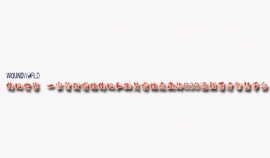文献精选
Xiaofan Xu1*, Kaiyue Chang1*, Dongxue Song1*, Guangtong Tian2*,Xiaohang Hu3, Liqing Jiang3, Bin Zhang3, Qingli Bie3, Shuhua Lu3, Xiaozhe Li3, Haixin Dong3, Chengqiang Jin3#
1 School of Clinical Medicine, Jining Medical University, Jining, China
2 Department of Clinical Laboratory, Jining Hospital of traditional Chinese Medicine, Jining, China
3 Department of Clinical Laboratory, The Affiliated Hospital of Jining Medical University, Jining, China
Email:#该Email地址已收到反垃圾邮件插件保护。要显示它您需要在浏览器中启用JavaScript。.
How to cite this paper: Xu, X.F., Chang, K.Y., Song, D.X., Tian, G.T., Hu, X.H.,Jiang, L.Q., Zhang, B., Bie, Q.L., Lu, S.H., Li, X.Z., Dong, H.X. and Jin, C.Q. (2021) Cedecea lapagei in a Patient with Multiple Injuries: Report of a Rare Case. Journal of Biosciences and Medicines, 9, 1-5.
Received: September 28, 2021
Accepted: October 26, 2021
Published: October 29, 2021
Copyright © 2021 by author(s) and Scientific Research Publishing Inc.
This work is licensed under the Creative Commons Attribution International License (CC BY 4.0).
http://creativecommons.org/licenses/by/4.0/
https://doi.org/10.4236/jbm.2021.911001
Abstract
Cedecea lapagei (C. lapagei) is an opportunistic pathogen in old patients with many comorbid diseases and the immunosuppressed. It is a gram-negative, facultative anaerobe bacterium of the Enterobacteriaceae family. We present a rare case of a patient with multiple injuries, C. lapagei was found from the exudate of the wound, what’s more, the Proteus vulgaris was also found in blood culture medium at the same time. According to the available literature, this is the first case of simultaneous infection of two bacteria including C. lapagei and Proteus vulgaris from the exudate of the traumatic wound.
Keywords: C. lapagei, Cedecea, Proteus vulgaris, Exudate
焦闪云,范文娟,桑莉莉,王 静*
上海市杨浦区同济大学附属杨浦医院,上海
Email:该Email地址已收到反垃圾邮件插件保护。要显示它您需要在浏览器中启用JavaScript。,*该Email地址已收到反垃圾邮件插件保护。要显示它您需要在浏览器中启用JavaScript。
收稿日期:2020年7月27日;录用日期:2020年8月7日;发布日期:2020年8月14日
文章引用: 焦闪云, 范文娟, 桑莉莉, 王静. 一例骨科牵引床手术体位造成会阴 III 期压疮患者的护理[J]. 护理学, 2020,9(4): 294-298. DOI: 10.12677/ns.2020.94046
摘 要
股骨转子间骨折(IFF)即股骨粗隆间骨折,是指股骨颈基底至小转子水平以上部位所发生的骨折,是老年人常见的损伤之一。IFF多见于老年患者,其身体耐受能力相对较差,因此创伤小,操作简便,且固定可靠的内固定方式越来越受到临床重视。因而股骨近端防旋髓内钉(PFNA)作为近年来治疗股骨粗隆间骨折的微创内固定方式,越来越得到广泛应用。股骨骨折因周围肌肉发达,手法不易整复,整复后也不易维持对位,应用牵引床可以很容易地在C型臂X线机下通过调整牵引床装置达到良好的复位,并且在术中操作时始终保持良好的复位效果,不会发生体位的改变。所以牵引床已广泛应用于IFF复位内固定手术。但在牵引床的使用中体位的摆放不像其他常用手术简单,由于体位的放置过程较复杂,且手术对体位的要求特殊,实际操作中极易发生相关的护理问题。
关键词:牵引床,股骨骨折,会阴,压力性损伤,护理
Nursing Care of a Patient with Perineal Stage III Pressure Sore Caused by Orthopaedic Traction Bed
Shanyun Jiao, Wenjuan Fan, Lili Sang, Jing Wang*
Yangpu Hospital Affiliated to Tongji University, Yangpu District, Shanghai
Email:该Email地址已收到反垃圾邮件插件保护。要显示它您需要在浏览器中启用JavaScript。,*该Email地址已收到反垃圾邮件插件保护。要显示它您需要在浏览器中启用JavaScript。
Received: Jul. 27th, 2020; accepted: Aug. 7th, 2020; published: Aug. 14th, 2020
Abstract
Femoral intertrochanteric fracture (IFF), the intertrochanteric fracture, refers to the fracture of the femoral neck from the basal to the small trochanter level, which is one of the common injuries in the elderly. IFF is more common in elderly patients, and its physical tolerance is relatively poor, so the trauma is small, the operation is simple, and the fixed and reliable internal fixation is more and more clinical attention. Therefore, the proximal femoral nail (PFNA) has been widely used as a minimally invasive internal fixation for the treatment of intertrochanteric fractures in recent years. Due to the surrounding muscles, the femur fracture is not easy to repair, and it is not easy to maintain the alignment after the recovery. The traction bed can be easily adjusted by the adjustment of the traction bed device under the C-arm X-ray machine, and during the operation. Always maintain a good reset effect during operation, no position change will occur. Therefore, the traction bed has been widely used in IFF reduction and internal fixation surgery. However, the position of the traction bed is not as simple as other common operations. Because the placement process of the posture is complicated, and the requirements for the posture of the operation are special, the related nursing problems are easily caused in actual operation.
Keywords:Traction Table, Femoral Fracture, Perineum, Pressure Injury, Nursing
Copyright © 2020 by author(s) and Hans Publishers Inc.
This work is licensed under the Creative Commons Attribution International License (CC BY 4.0).
http://creativecommons.org/licenses/by/4.0/
Ali Alrida Rahal1, Sinan Alboudi1, Israa Ali Haidar2 , Anwar Alhassanieh1
1 Department of Plastic Surgery, Faculty of Medicine, Damascus University, Damascus, Syrian Arab Republic
2 Obstetrics and Gynecology Department, Faculty of Medicine, Damascus University, Damascus, Syrian Arab Republic
Email:该Email地址已收到反垃圾邮件插件保护。要显示它您需要在浏览器中启用JavaScript。,该Email地址已收到反垃圾邮件插件保护。要显示它您需要在浏览器中启用JavaScript。,该Email地址已收到反垃圾邮件插件保护。要显示它您需要在浏览器中启用JavaScript。,Dranwar_该Email地址已收到反垃圾邮件插件保护。要显示它您需要在浏览器中启用JavaScript。.
How to cite this paper: Rahal, A.A., Alboudi, S., Haidar, I.A. and Alhassanieh, A. (2020) Acute Burns in Pregnancy. Open Journal of Obstetrics and Gynecology, 10, 1702-1707. https://doi.org/10.4236/ojog.2020.10120154
Received: November 19, 2020
Accepted: December 18, 2020
Published: December 21, 2020
Copyright © 2020 by author(s) and Scientific Research Publishing Inc. This work is licensed under the Creative Commons Attribution International License (CC BY 4.0). http://creativecommons.org/licenses/by/4.0/
Abstract
Background: Acute burns injury in pregnant women is relatively rare especially in developed countries. There is a paucity of published data on the specific problems of burns in pregnancy, despite the high mortality for both the mother and the fetus. Aim: In this paper we will discuss all cases of acute burns in pregnant women admitted to the Burns Department in Al-Mouassat University Hospital in Damascus during the period between October 2017 and October 2019. Materials and Methods: A retrospective study of records over 2 years was conducted. The study included all pregnant burn injury women who were managed and followed up at the Burns Department in Al-Mouassat University Hospital. Patients were classified according to gestational age , burn characteristics, and maternal and fetal outcome. Results: Eleven patients were included , with mean age of 22.5 years (range 16 - 37 years). Of the 11 pregnant patients, 4 (36%) were in the first trimester, 3 in the second trimester (27%), and 4 in the third trimester (36%). The mean percentage of total body surface area (TBSA) burned was 40.9% (range: 17% -76%). Maternal death occurred in 2 of the cases (18%) and fetal death in 7 (63.6%). Conclusion: Maternal mortality is correlated to the percentage of the total burned area and inhalation injury. Burns in pregnant women have a profound effect on the fetal wellbeing, with a high rate of mortality especially in the first trimester.
Keywords: Acute Burns, Pregnancy, Mortality
Fatoumata Binta Balde1*, Zineb Benmassaoud1, Thierry Mukenge1, Majdouline Zemmari1, Hicham Abdellaoui1,2, Tazi Mohammed Charki1,2, Karima Atarraf1,2, My Abderrahmane Afifi1,2
1 Department of Pediatric Surgery, Hassan II University Hospital, Fez, Morocco
2 Faulty of Medecine and Pharmacy, Sidi Mohamed Ben Abdallah University, Faz, Morocco
Email:★该Email地址已收到反垃圾邮件插件保护。要显示它您需要在浏览器中启用JavaScript。
How to cite this paper: Balde, F.B., Benmassaoud, Z., Mukenge, T., Zemmari, M.,Abdellaoui, H., Charki, T.M., Atarraf, K. and Afifi, M.A. (2021) Place of Total Self-Skin Transplant in the Management of
Burns in Children: Results and Predictive Factors. Open Journal of Pediatrics, 11, 676-683.
https://doi.org/10.4236/ojped.2021.114063
Received: October 10, 2021
Accepted: December 5, 2021
Published: December 8, 2021
Copyright © 2021 by author(s) and Scientific Research Publishing Inc.
This work is licensed under the Creative Commons Attribution International
Abstract
Introduction: Skin transplant is essential in the management of skin substance losses, especially in deep burns. Our work aims to present, through a series of cases, the results of the skin self-transplant carried out to supplement the treatment of skin burns.
Materials and Methods: A one-year prospective study of the total self-skin transplant performed in the management of burns in children was included. After clinic and biologic considerations, a total self-skin transplant was performed.
Results: Forty-five burns were hospitalized, of which six patients received a total self-skin transplant. The average age was 7.43 years with male predominance. The burns were deep thermal burns, preferentially located on the trunk and upper limbs covering over 10% - 25% of the body surface of which 3% - 13% was transplanted. Transplant held in all patients. The surfaces left in spontaneous healing took at least 6 months to heal with some complications. Discussion: We performed a total self-skin transplant beyond technical reasons, for the best aesthetic and functional result it offers. The transplant significantly reduced the healing time with better aesthetic and functional results. The burned surfaces left to direct healing took an average of 6 months to heal and there were associated complications such as formation of keloid scars, hypertrophic plaques and skin retractions leading to cosmetic deformities. The final results appear to be independent of the time required to complete the transplant, and it will be necessary to ensure that there is no local and systemic infection and anaemia.
Conclusion: Total self-skin grafting still has its place in the initial management of burns in children. It offers good aesthetic and functional results. License (CC BY 4.0).
Keywords
Skin Transplant, Burn, Child
http://creativecommons.org/licenses/by/4.0/




